The customer journey is a term used for the stages that a customer goes through on their way to making a buying decision. We are, in fact, talking about the buying behaviour in relation to the e-commerce customer journey. Your challenge as an entrepreneur, web designer, blogger, or e-commerce manager is to guide the customer through the provision of effective content at the right time in order to successfully convert to sales.
There is a reason that the term “customer journey” was first developed in connection with online marketing. In order to evaluate the user behaviour on web pages, the customer journey steps are tracked via the website and its sub-pages. This is how we also know that consumers choose their own digital path. The goals addressed first on a page are highly individual and depend on the intention and motivation of the respective person. In most cases, pre-planned, linear information portals planned by the website operator are not adhered to. Furthermore, different customer groups prefer different media channels and like to read blogs or watch podcasts and video tutorials. In various studies like the one here, such digital trips by users were assessed – and each one took its own course. Here is also a crucial difference to the classic conversion funnel, which aims at creating a straightforward way for conversion rate optimisation.
The same situation can be said about the game of chess. The game is relatively simple to play, but you can play a thousand times and each time, it will be different. Easy to learn, hard to master – that’s exactly the way it is with the digital customer journey.
However, there is a significant difference that you can use to your advantage. Chess is about defeating an opponent – but by creating content for customer journeys, you want to help your potential clients. If you are passionate about your business and do a good job in your field, you’ve already taken the first step in your own journey.
What you will learn about customer journey content on this page:
Why do customers “travel” and how does that help you?
Today’s customers are self-educated and tend to be more knowledgeable than before. The Internet enables them to take customer journeys and search a variety of sources for the information that ultimately leads to making a purchase decision. The consumer is no longer dependent on regional providers or entities. With just a few mouse clicks, you can find out how many other sellers are offering the desired product or service. The word of other Internet users who are perceived as sympathetic and competent – the aptly-named influencers – is valued higher than the advertising promises of companies.
Meanwhile, a wider choice can lead to greater uncertainty: Who is the best provider? How does one use this product? Are there cheaper or better alternatives available on the market? Do the recommendations of experts and influencers clash? To answer these questions, users go on a customer journey.
This is your chance to produce excellent content to convince the willing-to-pay consumer about your offer. After all, there is already a purchase intention – even if the user is still unsure. You are a tour and travel guide in one and your aim is to help the digital travellers step-by-step to the relevant content. At the end of the journey, there is a sense of achievement, and with it, your profit. But the question is, which contact points count here and how can you create a better overview of a touchpoint map? We will clarify below.
Of course, in order for your text to be effective for the user journey purposes, you need to know your target audience. Before you get fully involved in creating content for the digital customer journey, ask yourself the following questions:

What do my customers do before making an online purchase?

Which informational search queries do they enter on Google and other search engines?

What do customers experience on the different stages of their online journey?

How can I provide them with content at each stopover in order to resolve their queries?

Does my text match the target audience and my product/service offer?

What can I do to help customers return and even recommend me to their friends?
We will assess these questions in more detail below.
Would you like to optimise your customers’ digital journey with perfect content creation?
Our authors will help you!
Register for free by clicking here
Customer Journey Map – Where are they Going?
In order not to feel overwhelmed when following your customer journey steps, it is advisable to create a Customer Journey Map. This map will help you structure your projects and perform a touchpoint analysis.
Customer journey touchpoints are where people interact with your text. These touchpoints are where your customers stop by to read informative and useful content. You should make a lot of effort in getting the most out of every touchpoint. If your article is highly informative and helpful, it will keep the reader engaged for longer.
Distinguish yourself from the competition. Deliver information that other competitors don’t have or package your content in an original and easy-to-understand way. The customer experience is hugely important, so it’s not just about winning the customer – the sympathy factor plays an almost a bigger role. Show potential clients that you understand them and that you care about solving their problems.
This is why target audience analysis is an important part of the customer journey map. Before you send your clients on such journey, you should go through it yourself first. Track the possible steps of a consumer through your online shop. Is all the information easy to find? Is the ordering process running smoothly? The navigation menu, the search window, the shopping cart – these are all important touchpoints.
Every touchpoint needs to be connected to a positive user experience. If a user on your site does not immediately reach the desired destination, they will feel even more frustrated. Internet users are impatient and quick to end their journey if they run into any problems, such as long page-loading times or faulty shortcuts. Before you know it, the user moves on to the next website, and one of your competitors ends up winning that client.
Identify your touchpoints and list them clearly, for example in a spreadsheet or on paper. Check for every single point on whether it can meet the expectations of your clients. This will give you a better overview of where your site needs to be improved. This procedure is especially useful for large-scale online shops.
The touchpoints are then visualised using a graphics programme or a drawing table – the result is the customer journey map. On this map, you will be able to evaluate the quality of individual touchpoints, whereby in practice, it always ensures user feedback flows. This is an ongoing process of optimising the existing text as well as creating new ones.
If you want to see how creative customer journey maps can be designed, you will find some particularly successful examples in this article by the research agency Uxeria .
What are the various types of touchpoints?
Here is an overview of different types of touchpoints, including those that are outside the e-commerce customer journey, but can still influence them.
The Search Query:
The consumer journey begins with the online search. Pay attention to effective keyword management for your article. The meta description also plays an important role here. For SEO, it’s almost insignificant, but the main role of the meta-description is to give the user a clue on what to expect after clicking on the link.
The Company Page:
Your web presence, or your online shop, is the central terminal for your clients. Your products can be purchased from here. After all, the core information is waiting here and you must, therefore, present your company in the best possible light. Many external posts tend to link to the merchant site. But if the content on your website does not convince you, you’ll have a hard time convincing anyone else. We recommend using external web designers, graphic artists, authors or SEO experts in case your own skills are not adequate.
Landing Pages:
Landing pages act as touchpoints for concrete and, above all, extensive information and instructions for a specific topic or product. At the end of these pages, there is a call-to-action so that the text convinces users to click on the link and convert immediately. In addition to a purchase, subscribing to a newsletter or registering on your website can be the goal of the conversion. Landing page marketing should, therefore, be a cornerstone of your content strategy customer journey process. To ensure high-quality text, you can hire freelancers who, for example, will create and design landing pages for you.
Newsletter:
These are usually sent out to subscribers at regular weekly or monthly intervals, and contain, for example, information about new products, instructions, guides, or tips on upcoming events. If you have a good topic, you can also send “Special Newsletter” next to the usual message or for special customer groups. Again, high quality counts in every correspondence. When in doubt, it’s better to skip this part rather than send the copy or plain advertising messages.
Social Media:
Social media marketing has become indispensable for successful user journeys. The vast majority of all consumers use at least one social network for research purposes and exchange of opinions during their journey. Thousands of groups have already been created on Facebook alone, where practical experience and expert tips are shared. Audiovisual fans will find YouTube of particular interest, where there are many channels that discuss numerous topics. In addition, people are increasingly turning to free messengers like WhatsApp or WeChat.
Word of Mouth:
The recommendation by friends, acquaintances or influencers is one of the most powerful contact points. In the past, you’ve probably decided to buy a product or service more than once or twice, because a trusted person advised you to do so. Whether your customers recommend you or not is beyond your immediate control. But with an excellent service and valuable contributions on all major channels, you can become an influencer yourself. If you help users, they’ll be happy to share your content – without having to ask them yourself.
Direct Advertising:
Nowadays, fewer people respond to the classic direct advertising. Annoying pop-ups, flashing banners and glossy advertisements are becoming increasingly ineffective and even lead to increased user dislike. Nevertheless, when these ads are sparingly used in connection with profitable actions, they can act as a touchpoint on the customer journey. Make sure your offer adds value to the user and does not turn out to be an empty promo.
Press Releases:
When your products or services are mentioned in local and national press releases, they can contribute to increasing visibility. However, many readers can become increasingly suspicious of overly exuberant sales pitches. Advertisements in newspapers are often designed to look like regular articles. A consumer who is already looking for an offer like yours could be picked up at such a touchpoint.
Promotions and Trade Fair Participation:
With a sufficient budget, you can organise unique events or present yourself at trade fairs. At trade fairs, you will meet an audience that is already actively looking for the solutions you have in store. It can often be the final touchpoint, when the trade fair visitors are in the buying mood.
Business Cards and Giveaways:
From stationery to key rings, all the items or promotional gifts that bear your logo can be used to raise brand awareness. For example, small giveaways can be distributed at trade fair booths.
Reference Books and Magazines:
This means both publications in which you are mentioned, as well as those that you wrote or published yourself. A textbook with your name on the cover is of course a great reference. Nowadays, authors are no longer dependent on the support of publishing companies. Self-publishing on Amazon , Books on Demand and similar sites are about to revolutionise the book market. And if you allow a specialist magazine to print a detailed article about your company, you will surely reach your target audience.

Customer journey develops through convincing content
The best way is to start looking for the right author now.
Customer journey and AIDA
No, we are not talking about the cruise ship company, AIDA – although the content marketing strategies of all shipping companies and travel agencies are aimed at successful customer journeys. In the tourism industry, it is of course particularly important for the trip to be shown in the most appealing way so that customers make the booking. And the AIDA principle is virtually the mother of all customer trips. However, this principle is over 100 years old and has changed in terms of the customer journey.
AIDA is an acronym for Attention, Interest, Desire, Action. While the basic principle is that these stations are processed linearly until they lead to conversion or purchase, the journey of modern customers is not on predictable paths. They choose their touchpoints themselves, wavering between indecision and the desire to buy, until you pick them up with the ideal content. Nevertheless, we can use the AIDA model to support the digital customer journey. For this we will simply distribute our touchpoints based on the four letters:

Attention
Users make search queries or consult others in forums and social media sites. This is the first time they come into contact with your company’s website or online shop. If the users are not yet convinced by your personalised direct mail strategy, they may respond accordingly.
Interests
Interested parties intensify their search, read blogs, subscribe to newsletters or refer to specialist text. This is when the article on your website is read extensively.
Desire
Nowadays, users prefer obtaining personalised information by subscribing to newsletters, whitepapers, and e-books. Lead generation is developing fast. At this point, it may be worthwhile to provide the interested parties with additional information, for example through personalised e-mails or landing pages.
Action
Landing pages are visited through the call-to-action. Your products are selling, and many customers recommend you.
The word-of-mouth touchpoint – the recommendation of friends, partners or influencers – always plays an important role and can be the tip of the scales. Social media sites also accompany the entire customer journey. The importance of effective social media content can not be emphasised enough.
Different Types of Search Queries
The journey starts with a search – but not all search queries are the same. Since hardly any marketing area has been so intensively researched and explored like search engine marketing, there are three main types of search queries that have recently emerged. These are the transactional, navigational and informational search queries.
The users’ intention is the deciding factor for the classification of search queries. Content can be much more efficiently optimised for search engines, if you know exactly why people are looking for it. So let’s take a closer look at the three types of search queries.
Transactional Search Queries
Transactional searches are based on a buyer decision-making process or the willingness to engage in a similar transaction. Users want to buy a product or service or use it for free. The search engine usually uses terms such as “Book Trip”, “Order Book” or “Download Catalogue”. The buying decision process can be obtained, for example, from inquiries such as “Travel to Madrid” or “Holiday Homes on the North Sea”.
Navigation-oriented search queries are aimed at finding a concrete goal. There is no clear purchase decision. People are looking for a specific website, but they are not sure how to write the name of the page or company. Often, subpages should be addressed, but it is only the umbrella brand or a rough idea of a place in mind. For example, search queries would be like “Samsung”, “Euston station” or “downtown restaurants”.
Informational Search Queries
Informational search queries are, so to speak, the standard on the web. Among the countless possible variants are, for example, inquiries about instructions, all kinds of services or about products and activities, without having to buy them immediately. In addition to individual search words such as “writing”, “fishing” or “cycling” questions are often observed. For example, in the question form, search queries are: “How do I write effective customer journey content?”.
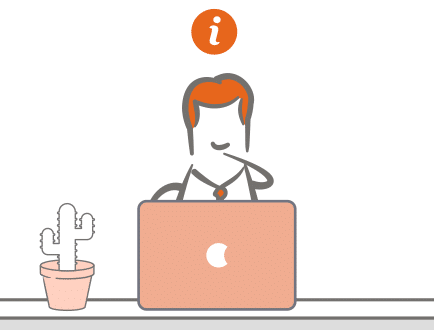
Search engines like Google are based on these search queries .Depending on the category in which a search area., the corresponding content is displayed in the search results. While transactional search queries are directed to matching shops, the informational and navigational search queries tend to lead to the umbrella brand of a provider.
The Customer Journey Stages
The course of the customer journey varies from customer to customer and is influenced by numerous individual factors. But we can capture a few stations that all customers go through sooner or later on their online trip. It is at these stations that you can provide online travellers with the appropriate content.

The Problem – the Journey Begins
For every future customer, the journey begins with a problem that needs to be solved. Whatever the reason for the problem, the person in question will begin to look for solutions.
The goal is to find a quick remedy and the first orientation usually takes place in the immediate circle of friends or acquaintances. You may already be praised by customers who have visited your website in the past. Otherwise, users will quickly extend their search to the Internet to search on Google and other search engines. Since there is often only a vague idea about how to solve the problem, the search queries are mainly in the informational area.
Checklists and simple video tutorials are among the first solutions found on Google search engine. With a powerful, search engine optimised content, you should work your way up the first page of Google search results. At the beginning of their journey, users seldom click through the other pages.
The classic methods and social media sites are full of guidebooks and tips for solving various problems. Sometimes that can be enough, but for more complex issues, it often turns out that more information is needed.

Paths of Knowledge – the Way to Solve the Problem
The users have by now obtained hints on how their problem can be solved. They keep track of the most promising routes, such as reading all your blog’s past entries, studying the product descriptions in your store, or making specific queries in forums and social media groups. This is the stage where you can provide users with targeted information. Extensive tutorials, product testing or recent studies will give them a clear picture and make them understand that you are seriously interested in helping them. If your content meets the requirements, the customer will then go through the first highlight of their journey.

Purchasing decision – the First Highlight of the Trip
The traveller becomes a customer and buys from you for the first time. It will often take a final push for the customer to make their final purchasing decision. This is especially true with big purchases as the customer wants to be completely certain that they are making the right decision. Detailed testimonials, product descriptions in live videos or at trade fairs can be the decisive factor. Your business may need a last sales pitch so make sure you inform and advise your clients, but do not push them into buying. The final decision is often made instinctively.

The Returning Client – the Destination Becomes a Second Home
Perhaps you know this already: Once you feel comfortable at a holiday destination, you will always want to return there. It’s the same for your customers, who prefer to be loyal to you if they were satisfied with your product or service. This is where the individual need for security comes in. Since switching to another supplier or service provider would be associated with uncertainty, builds up a certain inhibition threshold in your favour with the customer. Only through a good service and useful offers can you ensure that your regular customers stay with you even when your competitors lure them with low prices or service promises. They will continue to shop with you in the future.
When you do your job well, the customer journey starts over and over again. It is, therefore, not a linear process, but in fact a cycle. . One could compare the principle with a traffic roundabout, where consumers drive at a fixed point (search query, key phase) in order to leave at the exit and back to the purchasing decision or the drawing board again. Always make sure the departure point leads to your business.
Don’t take your success for granted since this is just the beginning. It’s great if you’ve built a regular clientele. You should strive to keep your clients engaged, take them seriously and provide them with first-class treatment. Pay attention to the current trends and feedback from users and never forget that global corporations have already failed because they have not realised what their customers want. For example, Nokia: once the world’s largest mobile phone manufacturer, it made the leap to the smartphone and customer-friendly mobile operating systems and was ultimately only able to save itself through massive external investments. Nokia is no longer a leader on the market.
Another advantage of satisfied clients is that they are likely to invite new passengers to the customer journey.

Travel acquaintances – New Passengers Come On Board
Travelling with like-minded people is often more fun. And anyone who has found a special offer or the solution to an urgent problem will also like to tell friends and acquaintances about it. Word of mouth that brings you new customers is one of the goals of an ideal customer journey.
The Various Customer Journey Content Types
As already mentioned, AIDA is the original idea of successful marketing with slight modifications and it’s also applicable to the customer journey. When creating your content, you should align every blog and video accordingly. To reach out to as many users as possible, we recommend covering a wide range of content types. Some users prefer brief and easy-to-digest articles, while others see detailed text as informative and they will happily read long landing pages. When classifying content types, we focus on what the user expects from the actual content.
The text should be:
As far as text creation is concerned: If you do not have the time or if you think you can not write professionally, you can always hire external freelancers for e-commerce content.
Conclusion:
Customer journeys happen throughout all the seasons of the year. As a website or shop owner, you’ll want to please your customers with everything – from the first point of contact to all other aspects. In order for a prospective customer to become a client, you will be offered various touchpoints. As a result, users come into contact with your offer multiple times on their journey, with each new experience reinforcing their purchasing decision. See your business and content from the eyes of customers in order to see for yourself what the digital journey is like.
Customer journey content creation is a continuous process that never really ends. Use your customers’ experience and feedback to optimise your content.
We wish you every success in taking your customers on the digital journey.
Do you need effective content to reinforce the customer journey?
At Textbroker, you will find the best authors.
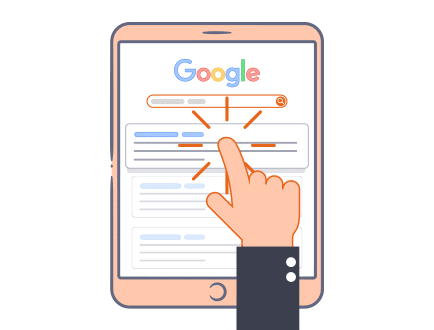

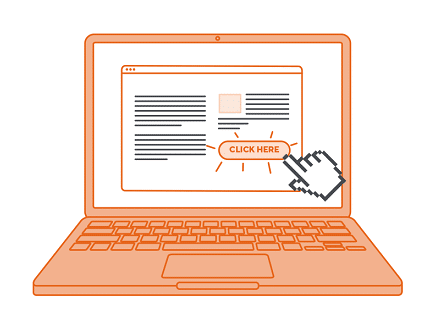


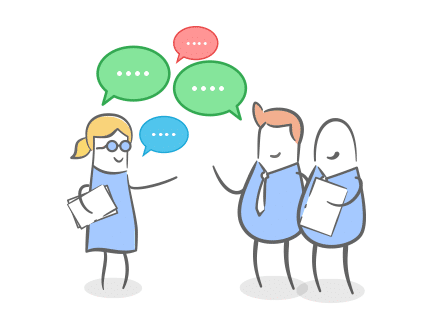


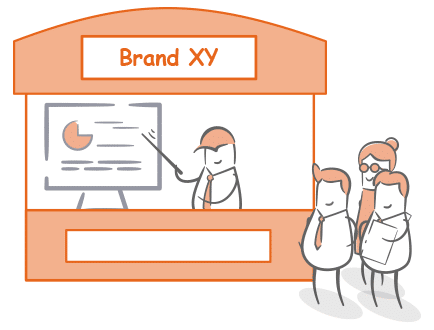


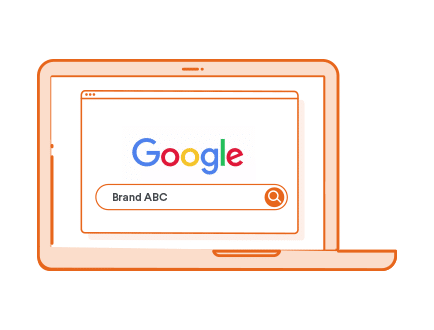
No comments available